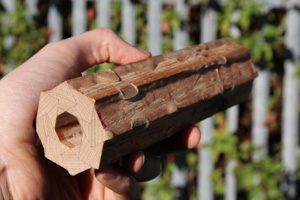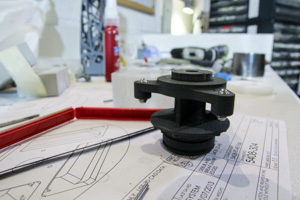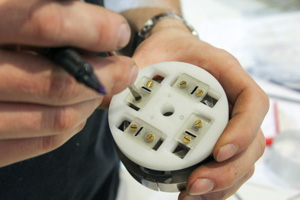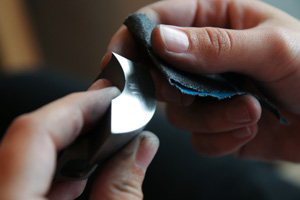
Glasgow 2014: Queen’s Baton
This project was awarded to 4c Design. I worked on it during my employment with the company.
Simply put: our brief was to design and manufacture the Queen’s Baton for the Glasgow 2014 Commonwealth Games. The Queen’s Baton is to the Commonwealth Games, what the Olympic Torch is to the Olympics. Except with a few key distinctions; there is only one baton per games and rather than carrying a flame, the baton carries a message. This is a message from the Queen, to the Commonwealth and it remains a secret until the opening ceremony, where upon the reading of the message begins the games. The single baton travels from Buckingham Palace to each of the 70 Commonwealth nations and finally to the home of the games. A journey of 288 days and 190,000km.
Design Brief...
The Glasgow 2014 team gave 4c a very open brief:
“Design the Queen’s Baton for Glasgow 2014”
While 4c had milestones to achieve and information from previous relays; the design was entirely in our hands for better or worse. This was a bold move by Glasgow 2014, but one that was appreciated. The 4c team were determined that the baton wouldn’t just be another pretty object, instead it should have genuine meaning behind each element. There should be a feature made of the Queen’s message. Also as engineers, we wanted it to have a practical element and some mechanical theatre.

I remember finding the early stages of determining the brief a torturous time; as a designer I was desperate to start designing and talking about shapes and mechanics. But, William Mitchell, the design lead on the project quite rightly restrained the teams design urges, because as with any piece of good design it is vital to first have a defined brief. We went through several exercises to determine what the baton should be and gradually a story began to form.
The four elements of the brief as I saw them were:
- The baton had to be honest; when looking back at the original batons it was primarily a carrier for the Queen’s Message. So, it was agreed that the message for our baton would be written on paper, be visible to the public (although not readable) and would form the centre of the design. Also, the materials for the baton had to be true to Scotland, in its heritage and landscape.
- It was important to showcase the latest technology with the baton, but we were cautious of using digital technology as that seemed to conflict with the honest/authentic part. So instead we would use the latest 3D printing technologies to create a design previously impossible to produce by any other technique.
- As the baton travels around the Commonwealth, it is inviting each country and territory to join in the Games. We wanted to cement this message by providing each area with a gift that serves as an invitation to the Games. The baton is the perfect platform, from which to deliver this invitation.
- The baton of course needed to look the part, but as engineers it was important to us to introduce a little mechanical theatre. Since the Queen’s Message must be kept secret, we thought a simple mechanical puzzle could keep it locked away until the opportune time. This puzzle might also be the key to delivering the afore mentioned invitation.
The Design and Engineering...
The four key design engineering challenges were the
The Gem
It was decided the Gem should be made from a natural Scottish material. There is a lovely little design manufacturing story here; as most of the worlds Curling Stones are all made from granite mined from the Isle of Ailsa Craig. When manufacturing curling stones, the centre is bored out and typically discarded; we used these cores to form the basis of the Baton’s Gems. Inserted into the top and bottom of the Gem, are custom coins, designed by myself, manufactured by a Nigel Munro at the GSA.




The Puzzle
The puzzle forms the top of the baton and must not only keep the Queen’s message safe, but also dispenses the Gems to each Commonwealth nation. The mechanism proved a real challenge to get right, but the sort of challenge relished at 4c. The puzzle is mechanically the most complex section of the baton containing 53 parts and yet from the outside appears the simplest section of the design. I must be careful what I say, so not give away the secret, but it is based around an old Japanese puzzle.
It is not often a design I worked on is used by the Queen, but I know that when the message was placed into the Baton by the Queen. She took great delight in the mechanism and its hidden secrets. We aim to please, Your Majesty.




The Lattice
The team knew we wanted to display the Queen’s message, but for the longest time we didn’t know the best way how to do this. The breakthrough happened with this very simple prototype. It was found that by rolling up the message and internally lighting, it was visible but not legible. By surrounding the illuminated message with a spring (which later became the lattice) the message became further obscured and protected. Hence the lattice concept was formed and decided upon. This was also our opportunity to showcase the latest manufacturing technology, 3D printing (Selective Laser Sintering (SLS)). With this technology we could create designs which were previously impossible fabricate with traditional tools.




The Handle
The handle needed to be simple, easy to hold and we really wanted to use natural materials. It also had to house the electronics and so had to be hollow. Immediately we thought of wood as the material and upon consulting with Gal Gael we decided upon a ‘bird-mouth’ technique for constructing the handle. This is used in boat building for the construction of masts, it and relies on multiple lengths of wood that are assembled together and bonded together. This produces a very strong, hollow shape that has a very nice aesthetic. The wood is elm, locally sourced from a park in Glasgow.


The Fabrication...
Although we did outsource the fabrication of a few key components, all finishing of parts was completed at 4c Design. With a product like the baton, the finish had to be perfect and so the pressure was really on. The key elements to fabrication were the puzzle assembly and finishing the lattice.








Journey Around the World...
It has been amazing for me and the 4c team to see the Queen’s Baton travelling all over the globe, it is not often that a single object becomes part of something so massive and is exposed to so many people, cultures and experiences. To know that I played a role in its design and fabrication is something I am immensely proud of and it is incredible to see how well the design has been received all over the world.










